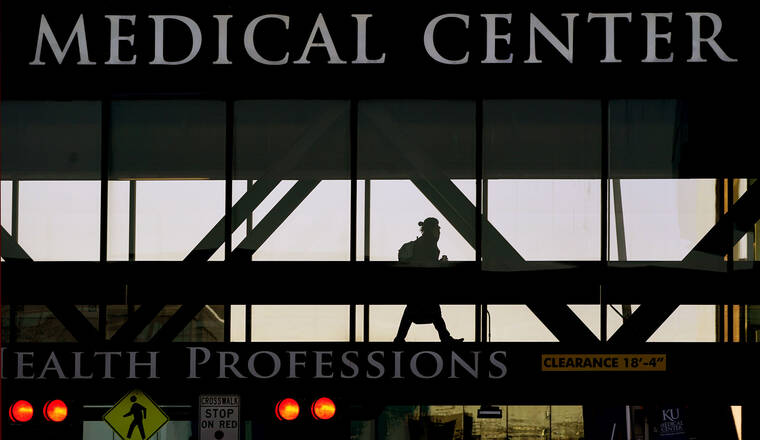As omicron numbers drop at Denver Health, Dr. Anuj Mehta is reminded of the scene in the 1980 comedy “The Blues Brothers” when John Belushi and Dan Aykroyd pile out of a battered car after a police chase.
Suddenly, all the doors pop off the hinges, the front wheels fall off and smoke pours from the engine.
“And that’s my fear,” said Mehta, a pulmonary and critical care physician. “I’m worried that as soon as we stop, everything’s just going to fall apart.”
Across the U.S., the number of people in the hospital with COVID-19 has tumbled more than 28% over the past three weeks to about 105,000 on average, according to the Centers for Disease Control and Prevention.
But the ebbing of the omicron surge has left in its wake postponed surgeries, exhausted staff members and uncertainty over whether this is the last big wave or whether another one lies ahead.
“What we want to see is that the omicron surge continues to decrease, that we don’t see another variant of concern emerge, that we start to come out of the other side of this,” said Dr. Chris Beyrer, an epidemiologist at the Johns Hopkins Bloomberg School of Public Health.
But he added: “We’ve been proven wrong twice already, with delta and omicron. So that adds to people’s anxiety and uncertainty and sense of like `When does this end?’”
Another reason for anxiety: COVID-19 hospitalizations aren’t even all that low. They are at a level seen in January 2021, amid last winter’s surge.
Hospitals limped through the omicron surge with workforces that already were depleted after many staff members quit the profession. The remaining health care workers got sick in droves. In some hospitals, office staff was assigned to help make beds.
Now, many hospitals are still in crisis mode, as they work to reschedule people whose hip replacements and even cancer and brain surgeries were put off during the omicron crisis to free up bed space and nurses to care for COVID-19 patients.
Even in North Dakota, which has consistently ranked near the top in the number of COVID-19 cases relative to the population, hospitals have seen a dramatic drop in virus patients. However, executives at Dakotas-based Sanford Health said their hospitals are still full.
“We’ve been running hard for a couple years here now, but I am not sure that I sense relief,” said Dr. Doug Griffin, a vice president and medical officer for Sanford in Fargo, North Dakota. “Most of our caregivers are giving care to other patients. We still have some very, very sick people coming in for all sorts of reasons.”
At the Cleveland Clinic’s 13 Ohio hospitals, the number of patients with COVID-19 has fallen to 280, down from an all-time pandemic high of around 1,200. Surgeries began to be delayed at the end of December, and the situation is just now returning to normal, said Dr. Raed Dweik, head of the system’s respiratory institute.

